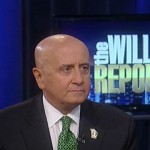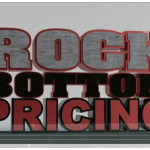 I wrote last week that contrary to popular perceptions I believe high speed electronic trading firms are morally neutral, and that’s ok. In Dungeons and Dragons (D&D) terms I hope they are “True Neutral,” while critics claim they are “Chaotic Evil” and supporters claim “Lawful Good.”
I wrote last week that contrary to popular perceptions I believe high speed electronic trading firms are morally neutral, and that’s ok. In Dungeons and Dragons (D&D) terms I hope they are “True Neutral,” while critics claim they are “Chaotic Evil” and supporters claim “Lawful Good.”
The existence of a few billion dollars in trading profits per year from these firms (estimates range from $1 to $10 billion in profit for the entire high frequency trading industry) doesn’t bother me in the least, even if they don’t actively seek to cure the world’s ills. (I know a few billion may seem like a big number, but it’s about the amount of money a single big Wall Street firm earns in a quarter of a year.)
Today I’d like to explore – and refute – one of the recent criticisms of the industry from Richard Grasso, as well as raise the possibility that in fact high-speed electronic trading is a great thing, at least for most of us.
The Grandma standard?

Richard Grasso, the former Chairman and CEO of the New York Stock Exchange (NYSE) from 1995 to 2003, spoke out in mid-September against new developments in stock trading such as high-speed traders, blaming them for the recent market volatility of August 2015.
It seems like Grasso should be the kind of wise, experienced, leader who could explain to the public what we should think about all this newfangled trading stuff.
A good rule of thumb, Grasso suggested, was that market changes should ensure that “little old grandma in tennis shoes also benefits.” Furthermore, “If you’ve taken care of her, you’ve taken care of everyone else.”
What an appealing image! Grandma! We should all be looking out for her! Also, do you know what it reminds me of? Those simplistic, emotionally misleading, and ultimately hypocritical public statements from some of our leading Presidential candidates.

Now, the first interesting thing about Richard Grasso’s statement is that he’s clearly wrong. As finance writer Matt Levine points out, in her tennis shoes should not be trading individual stocks frequently. Also, US equity markets have many constituents and multiple purposes, and Grandma in her Stan Smiths does not sit in the middle of these exchanges. Market structures in reality (and Grasso obviously knows this) should cater to giant institutional and professional investors who actually handle most people’s wealth, pensions and retirement funds, transacting between 5 and 10 billion shares per day. They, after all, are the ones actually who are actually handling Grandma’s pension.
What Grasso Represents
The second interesting thing about Richard Grasso is what represents and why his statements against high frequency trading can’t be taken at face value. He is a living symbol of the old way of trading stocks, prior to the rise of high-speed electronic trading.
He became a household name (outside of Wall Street circles) only upon leaving the New York Stock Exchange in 2003 with $140 million in accumulated retirement pay, benefits and deferred compensation.[1] Now, I don’t begrudge the guy a nice payday, even if it was for running the nominally non-profit NYSE (non-profit wink wink nudge nudge just like Roger Goodell’s NFL and the $40 million or so he makes per year from them. But I digress.)
What I begrudge about Grasso’s misleading statement is that clearly the NYSE itself – which compensated Grasso well and formerly controlled 80% of US stock trading – has been rendered far less important with the rise of high-speed traders. So what I really hear Grasso saying is that the near-monopoly of the old NYSE was a much better time for everyone, when in fact I think it was a much better time for NYSE insiders, but not necessarily for the investors needing to trade on the exchanges.
Now, Grasso himself may be an egregious example of an overcompensated defender of the status quo legacy system, but that doesn’t mean he’s not right. The questions still remain whether 1) The old way was better and also 2) Whether these high-speed algorithmic traders currently operate unfairly.
So what’s the evidence that the new way might be better for everyone, including possibly Grandma in her sneakers?
Lower Trading Costs
Mutual fund giant and brokerage company Vanguard Group (with $2.8 Trillion in assets and for whom, incidentally, the stock market SHOULD BE built for) has an interesting take on high-speed trading. In 2014, following the publication of Flash Boys, the President of Vanguard Bill McNabb refuted the claim that markets are rigged by high-frequency traders, instead arguing that Vanguard research shows trading costs have declined tremendously in the past 20 years alongside the rise of high speed electronic traders.
In a letter to the SEC in 2010, Vanguard estimated that electronic trading is responsible for as much as 0.5% savings in transaction costs per year for a typically managed mutual fund.
That might not at first sound like a lot. But Vanguard goes on in the same letter to estimate that for a $10,000 investment over 30 years earning 8%, these lower trading costs would save approximately $32,000 extra at the end of the time period. [Which is quite a bit of extra cash for Grandma, who is the one likely to be making those $10,000 investments through Vanguard.
As the 2010 letter says,
“Vanguard believes that a vast majority of ‘high-frequency trading’ is legitimate and adds value to the marketplace through increased liquidity, tighter bid-ask spreads, and a better linked national market system where investors can execute at the same or similar prices regardless of trading venue.”
If that reads like a lot of jargon, let me translate: “Rock Bottom Trading Prices! All Day! Every Day!”
So, an extra $32,000 in my retirement account based on a $10,000 initial investment? Huh. That is a serious argument that high-speed electronic traders are better than the previous system and are possibly a force for what a D&D player would call Chaotic Good.
So, “is it fair?”
I don’t know for sure. I suspect, though, that it’s mostly unfair to the NYSE traders and old guard Wall Street firms that offered much higher transaction costs to the rest of us.
A version of this post ran in the San Antonio Express News.
Please see related posts:
Audio Interview with Peter Kovac on HFTs, Part one
HFT D&D Alignment – Lawful Good or Chaotic Evil?
Book Review Fast Boys, by Michael Lewis
Book Review Fast Boys Not: So Fast, by Peter Kovac
Inside the Black Box by Rishi Narang
[1] Ironically, Grasso’s professional fate and ultimate embarrassment at his NYSE non-profit payday was sealed by Attorney General (later Governor) Eliot Spitzer, who himself became a living embodiment of – I don’t know quite what to call it but at the very least – the height of hypocrisy. In the end, Spitzer’s lawsuits got thrown out on appeal, Grasso kept the money, Spitzer suffered even more embarrassment, and Grasso got to be the wise, experienced leader making misleading statements on TV about market structure in 2015.
Post read (1012) times.







One Reply to “HFTs – A Force For Good?”